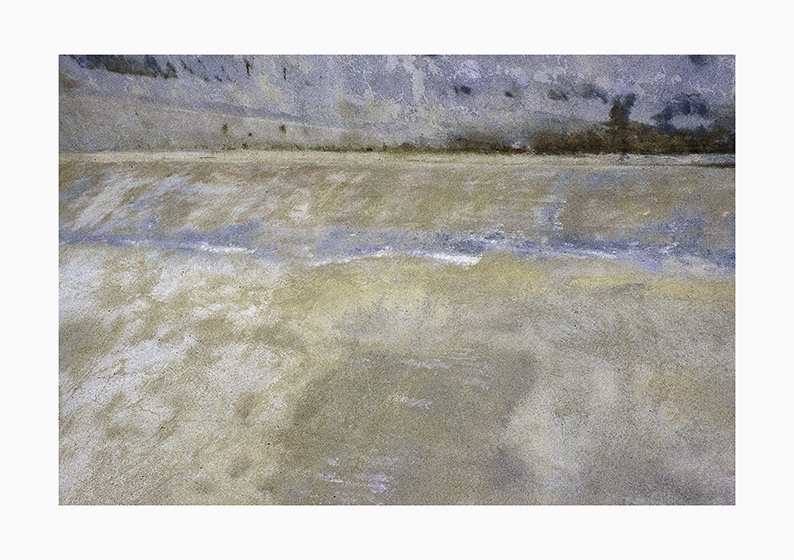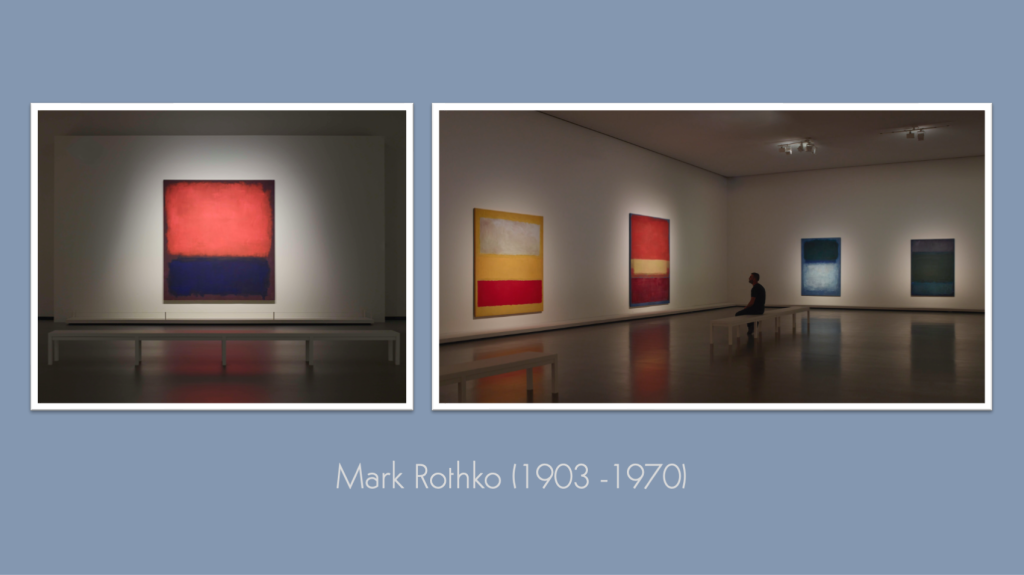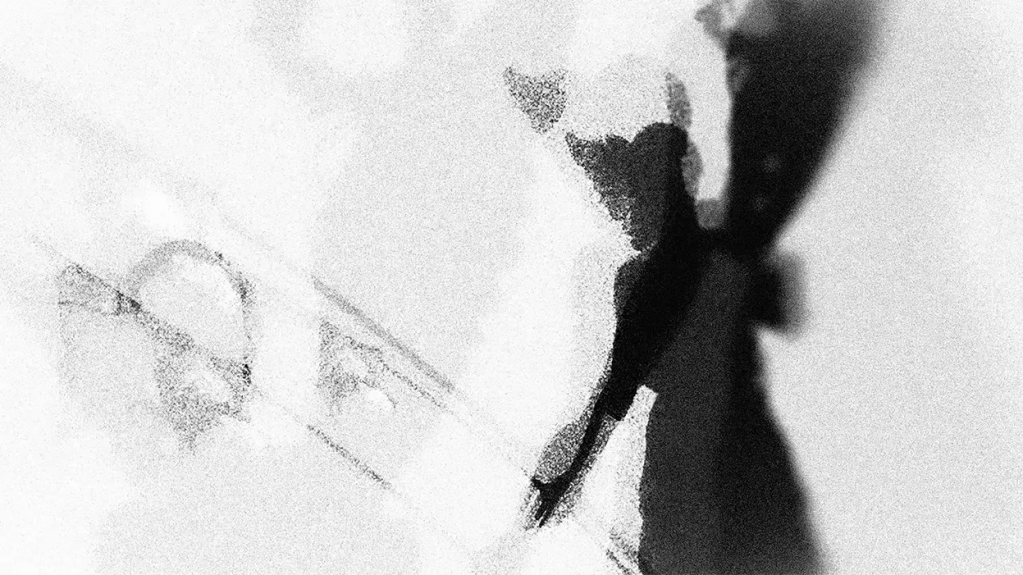
Arguably, all previous Kick-Abouts have been a response to this same prompt, courtesy of Francesca Maxwell, with each resulting showcase of work offering a guide to the ways in which different people take unpredictable journeys into new and unexpected terrains. As is attested to by a number of the works in this edition, ‘getting lost’ is never about losing time, but rather gaining experience.
Charly Skilling
“When I started thinking about this prompt – about how you plan a trip, about what can go wrong, about getting lost – I was reminded of this bit of family lore which is often trotted out at our family’s events: the day mother went to Shrewsbury and got lost.
It was actually in the mid-90’s (Cadfael was a very popular mystery television series at that time, based on the books of Ellis Peters) but everything about Mum’s story was reminiscent of a certain type of very British humour, which had its heyday in the films of the 1950’s and early ’60s, Ealing comedies like The Ladykillers, the early Carry On and St. Trinian’s films – and of course, the Miss Marple films with Margaret Rutherford. Check out “The 4:50 from Paddington” or “Murder at the Gallop” for a masterclass in British matronhood. Indeed, a precious golden thread of this tradition continues to this day, through the writing of Victoria Wood and Alan Bennett.
I have tried to capture something of the same spirit in “The Ballad of Ethel and Hilda” and reflect it in the images used, anachronistic though they may be. Along with Sir Derek Jacobi and Margaret Rutherford, you may also spot Joyce Grenfell, Sid James and Leslie Phillips, as well as a host of extras.
My thanks, as always to my techie, without whom this would not be half as much fun. I tip my hat, too, to my Mum Hilda, and her friend, Ethel. If there is an afterlife, they will be galloping through it, with gusto!”
Gary Thorne
Castle Road on Capitol Hill, Canada, (summers 1956 to 1961)
“Place holds strong significance, home on the city’s edge, schooling to begin in ‘58, summers beneath anchored clouds with shadows setting root, becoming cool dark pockets for secrets, and across the empty rolling range beneath bright light, daydreams ran wild being played out by shapechangers in search of possession. The house may still stand, the vastness of surrounding space has been lost, yet the place’s invitation, (in memory), to venture out and beyond is very strong.” Oil, canvas on board, 20x20cm.

Tom Beg
“I wanted to capture the feeling (in moody black and white photographs, of course) of what it can be like just to go for walk out on a summer day with no particular aim and take in the sights and sounds of the local neighbourhoods here in Japan. Initially the intention was to create a mini photographic book heavily inspired by Tales of Tono by Daido Moyriyama but in the end it became a short film using still photographs in the style of La Jetée.“
twitter.com/earthlystranger / vimeo.com/tombeg
Vanessa Clegg
“I must say thank you to whoever suggested this book as it was right up my street…loved it, especially “ the Blue of Distance” sections. This is a response to the part on maps…terra incognita.
When I was a child this island out in the Bristol Channel totally captured my imagination…and still does. I don’t ever want to go there or research its history as it’s a place of dreams that could be inhabited by giraffes and goldfinches or camels and weasels or simply exist in its own atmosphere of mists appearing and vanishing at will. A negative Uluru floating in cold northern waters.“

Cyanotypes in notebook.
“This evolved from Thoreau …”not till we have lost the world do we begin to find
ourselves” and Virginia Woolf ..”to be silent; to be alone”

Three panels, 12” x 12” graphite and watercolour on gesso.
Kerfe Roig
“Though I have not read the specific Solnit book, I have read at least one essay she has written about labyrinths (“Journey to the Center” from The Encyclopedia of Trouble and Spaciousness), and that’s the first thing that came to mind. A labyrinth is not a maze–there is only one path in and one path out. Labyrinths have been found in cultures all over the world, and are often used as forms of ritual or pilgrimage–a way to return to the source, to lose yourself in something larger and as a result find yourself again.”







kblog.blog / methodtwomadness.wordpress.com
Marion Raper
“In A Field Guide To Getting Lost, Rebecca Solnit says, “Never to get lost is not to live”. Such was the epic journey of Cabez de Vaca. He was the 2nd in command in a Spanish expedition led by Panfilio de Narvaez, which was commissioned by Charles V to establish colonial settlements and garrisons in The New World. However, after many disasters including hurricanes, shipwrecks, disease, starvation, attacks by hostiles and enslavement, only 4 of the original 600 men survived – including Cabez de Vaca. They spent the next 8 years wandering the S.W part of America and N.Mexico as traders and faith healers to some of the Indian tribes and were the first known Europeans to see the Mississippi River and cross the Gulf of Mexico and Texas. On his eventual return Cabez wrote a full account of the flora, fauna and Indian tribes he had encountered, and intended to conquer, but learnt so much from, including how to survive.
I decided to try something I had always wanted to do and experiment by doing a portrait of Cabeza using my old leftover makeup ie: various eyeshadows, eyeliners, bronzers and face powders.
So what did I discover? Well, yes, makeup is a good substitute drawing material – but Cabeza de Vaca – what a legend!”

Phil Cooper
“I don’t like the idea of being lost, and especially of being lost at night, so my contribution this week is a little sanctuary, just four walls and a roof, somewhere to keep the lost feeling at bay until the dawn, when the daylight banishes the monsters, real or imagined…”




Phil Cooper’s table-top model house
instagram.com/philcoops / hedgecrows.wordpress.com / phil-cooper.com
Francesa Maxwell
“Looking at my work over the years, I found all my paintings could be titled “a field guide of getting lost”, whichever style I chose. It all seems to be about finding a path in the chaos. Not that chaos is not one of the most beautiful and creative things there is. Whichever path I take will take me into unknown territory, never again able to retrace my steps and never returning the same as before. And every path will propel me towards new unknown territories and new adventures the more significant when in the spirit of being “lost”.
These four paintings I chose started as concepts for a short animation I had in mind based on a recurrent dream I had as a child and on Dante’s opening sentence of the Divine Comedy “Nel mezzo del cammin di nostra vita mi ritrovai in una selva oscura…” They are inks on watercolour paper, cold pressed, 240x680cm.”




Phil Gomm
“This was a bit of a no-brainer for me, given my many (!) excursions into the meadows and arable crops of my local countryside during the course of the lock-down and beyond. I haven’t quite managed a ‘Field Guide To Getting Lost’, but rather a guide to getting lost in fields in three parts.”



Graeme Daly
“I read a preview of A Field Guide To Getting Lost by Rebecca Solnit, and I think it couldn’t have come at a better time. Things are really unpredictable at the moment. At times feel like I am levitating in limbo, a bit stuck, a bit stagnant. I am a bit lost.
If you allow it, being lost is to be beckoned by brambles and tripped up; those brambles can cut you deep with its spikes; maybe those spikes are actually fangs embedded in the coil of a boa constrictor – or maybe the bramble is something you could simply skip over and bursting with mouth-watering berries?
I used to love getting lost. I think a lot of it has to do with my childhood, when I was always outside finding and climbing the highest trees, mapping them in my mind as a brilliant structure that would suit a tree house; and finding the highest hills of rural Ireland overlooking the derelict cottages falling to pieces of a life long gone.
I recently moved house; my senses spill into overdrive. I notice familiar sounds that feel completely fresh. I notice the cornice that has a gargoyle on it. I get lost so I can find my bearings. I go on excursions and explorations and scope out the quiet, dainty coffee and book shops, or the solemn parks budding with trees and wildflowers, or the grey cemetery I can have a jog around while listening to bird song.
I still get lost because to really get lost is to eventually find yourself.”


@graemedalyart / vimeo.com/graemedaly / linkedin.com/in/graeme-daly / twitter.com/Graeme_Daly
Maxine Chester
“I was reading ‘The Blue Distance’ chapter in ‘A Field Guide to Getting Lost’, by Rebecca Solnit. I put it down and picked up a book on Eva Hesse, an artist I am researching. She had discovered this quotation in a Simone de Beauvoir diary of (1926). As soon as I read the quotation something opened up and I could hear the three voices in conversation.”

Darning needle on blue distance, front to back, drawing, oil on paper, 42 x 29cm

‘Lost in the making’, fabric sculpture, 110 x 60 x 26cm
instagram.com/maxineschester / maxine-chester.squarespace.com
Marcy Erb
“These are my art responses to this round’s prompt – which was the book by Rebecca Solnit titled “A Field Guide to Getting Lost.” I haven’t read the book and wasn’t going to attempt it – so I worked with the title. My initial thoughts really hovered over the “Lost” part. I recently read a Reddit post about the Vietnam draft lotteries and how there appeared to be heavy bias in the initial lottery towards birthdays at the end of the calendar year. No one knows why – presumably the number draws were random – but there are explanations proposed of simple human error. Birthdays at the end of the year were added to the hopper last and then the whole thing was not properly mixed. These men, born at the end of the year in the years 1946-1950, “lost” that lottery.
My father was drafted in a different round, but the outcome was the same. The top picture is a reverse transfer monoprint I made from a photo of him and my mother shortly after he returned from bootcamp – he’s leaning on his beloved car from high school. The lower print was made from the first photo I could find of him after his first deployment to Vietnam. His face is different. He is different. Which is so strange to me, because I was born after he got out of the service and I’ve never known him any other way but after Vietnam. But making these transfer prints, it had never been more clear to me. It was shocking – and full of loss.”


“… but then Kerfe Roig posted her response to the prompt and it was about labyrinths and journeys and paths. I found it very helpful and comforting. So I made one more transfer print for her poem.”

In what I suspect is in part a response to the languor of lock-down, Charly Skilling is offering up Walter Richard Sickert’s painting Ennui as our collective jumping-off point for the seventh Kick-About. You’ll find the painting plus the new submission date below. Have fun, folks, and see you on the other side!



















Leave a comment